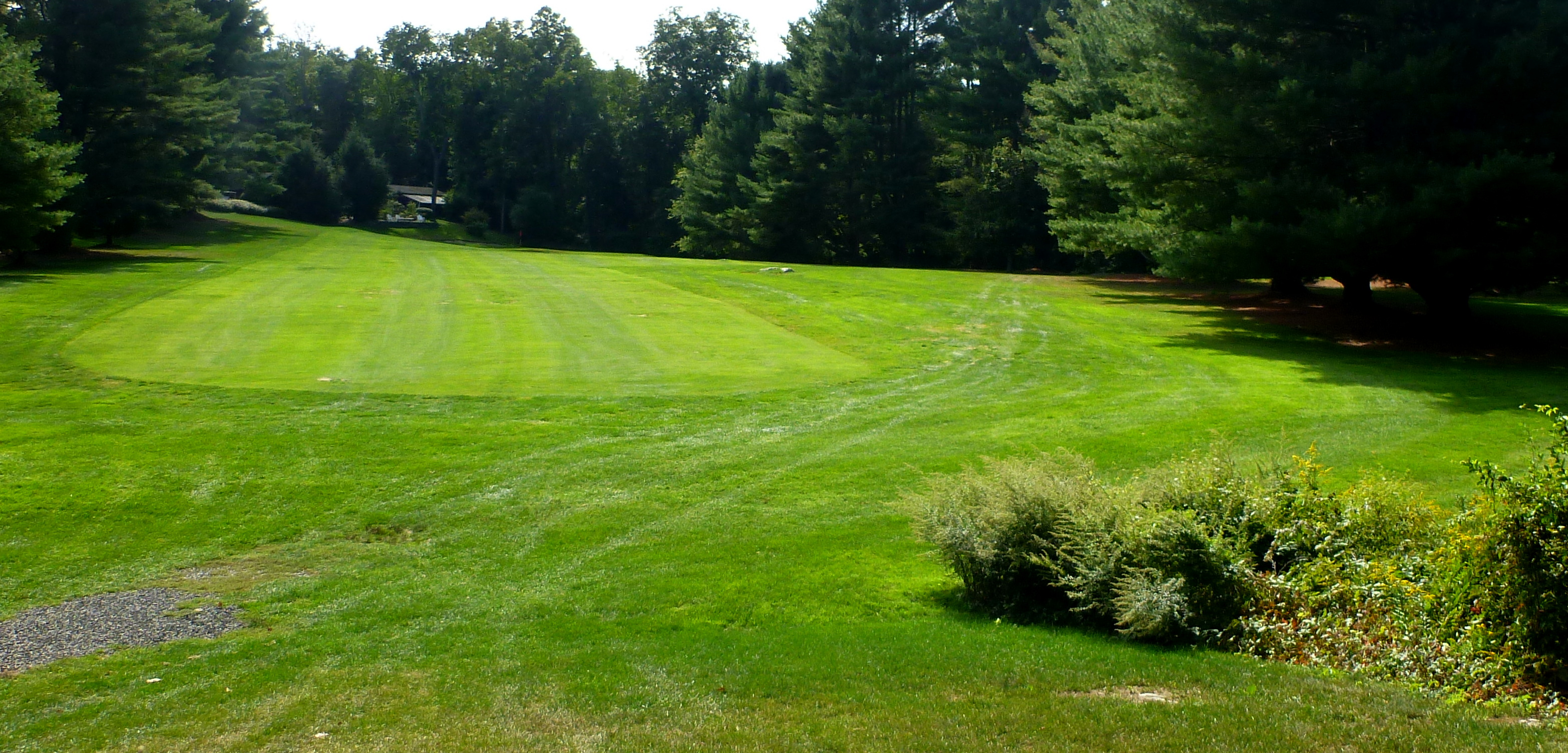It’s not just for the Ryder Cup.
Every year since 1948, my club has played a home-and-home match against our Enemy Club, on the other side of town. Across those seven decades, the results are roughly even, although in recent years my club has dominated. During the first round this year, my partner was Rick, who played basketball for the University of Maryland shortly after the Civil War but can still shoot his age:

I’ve played a lot of matches with Rick, both as a teammate and as an opponent, and one of the many lessons I’ve learned from him is that, although in stroke play a lousy shot is often a prelude to disaster, in match play it can sometimes give you an advantage that a good shot can’t.
During the first round, Rick hit an uncharacteristically lousy drive on our ninth hole, a par 4 that measures only about 260 yards, uphill. Rick is long enough to drive the green, but he started his shot too far to the right, and his ball hit some trees and kicked way back, to a bad lie on a downslope in the rough only 50 yards ahead of the tee—between the bald spot and the clump of brush in the lower right hand corner of the photo below:
His opponent then hit the kind of drive that’s easy to hit when the guy you’re playing is out of the hole: a high draw that ended up just short of the putting surface, in a little collar of rough to the left of the bunker in front of the green, maybe 30 feet from the cup. Some guys in Rick’s situation would have conceded the hole right then, just to get out of there. But Rick knew that his opponent was already mentally penciling in a win, and that if he could somehow hit a good recovery shot he could take emotional control of the hole. He also knew that he had nothing to lose. If your opponent birdies a hole in match play, a quadruple bogey by you doesn’t hurt you any worse than a par. But if you can turn a hopeless situation into a half . . .
Rick cut a fairway wood around the crap directly in front of him, and his ball ended up on the slope to the left of the green, pin-high. The hole that day was cut close to that side of the green, and the putting surface runs away, but he managed to chip it close.
His opponent now had a pitch for eagle, but suddenly his shot didn’t seem so easy. His ball came out of the rough hot, and ended up 25 feet beyond the hole, leaving a curling downhill putt for birdie — which he left well short. Rick then made his putt, and that meant that his opponent was no longer putting to win the hole, but only to tie it. He missed, and from that moment forward Rick was playing a bowl of oatmeal.






